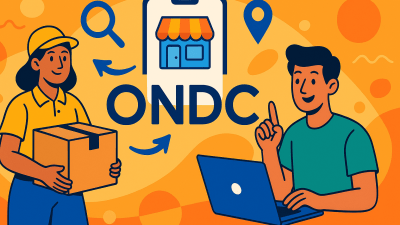In the high-stakes world of startups, the ability Enterprise sales can make or break a company. As legendary entrepreneur and investor Marc Andreessen once said, “The only thing that matters is getting to product/market fit.“
Introduction: The Enterprise Sales Imperative
However, achieving this fit requires more than just building a great product—it demands the skill to effectively communicate its value to potential customers.
This guide, inspired by insights from Pete Kuman, a Y Combinator (YC) group partner and alum, delves deep into the art and science of enterprise sales for startup founders.
Whether you’re a technical founder venturing into sales for the first time or a seasoned entrepreneur looking to refine your approach, this comprehensive overview will equip you with the knowledge and strategies to close your first enterprise customers.
The Myth of the “Natural Born Salesperson”
Debunking Common Misconceptions
Many founders, especially those from technical backgrounds, harbor a belief that sales is an innate talent—something you’re either born with or not. This misconception often leads to premature hiring of sales professionals or, worse, neglecting sales altogether.

Kuman challenges for enterprise sales, asserting that sales, particularly in the early stages of a startup, is a learnable skill. He points out that some of the most successful tech companies were built by founders who initially had no sales experience:
- Brian Chesky of Airbnb famously went door-to-door in New York to recruit the platform’s first hosts.
- Drew Houston of Dropbox personally responded to user feedback on Hacker News to drive early adoption.
- Slack’s Stewart Butterfield leveraged his product knowledge to pitch to early enterprise customers.
These examples illustrate that technical founders can and often do become effective salespeople for their products.
The Founder’s Advantage in Early-Stage Sales
Why Founders Are the Best Initial Salespeople
Kuman emphasizes that founders possess unique advantages that make them ideal for early-stage sales:
- Deep Product Knowledge: Founders intimately understand every aspect of their product, allowing them to address technical questions and articulate value propositions effectively.
- Passion and Conviction: The genuine belief in the product’s potential is contagious and can be more convincing than polished sales techniques.
- Decision-Making Authority: Founders can make on-the-spot decisions about product features or pricing, streamlining the sales process.
- Customer Insight Pipeline: Direct interaction with customers provides invaluable feedback for product development and iteration.
A study by FirstRound Capital found that startups where founders were actively involved in sales were 2.1 times more likely to raise successful Series A rounds, underscoring the importance of founder-led sales.
The Sales Funnel: A Strategic Approach
Understanding the Sales Process
The enterprise sales process can be broken down into several key stages, each requiring a different set of skills and strategies. Let’s explore each stage in detail:
1. Prospecting: Laying the Foundation
Prospecting is the art of identifying potential customers who are likely to benefit from your product. It’s a critical first step that sets the tone for your entire sales process.
Developing a Clear Sales Hypothesis
Before you start reaching out to potential customers for enterprise sales, you need a well-defined sales hypothesis. This should include:
- Target Customer Profile: Who exactly are you selling to? Be as specific as possible.
- Problem Statement: What pain point does your product address?
- Value Proposition: How does your solution uniquely solve this problem?
For example, Slack’s early sales hypothesis might have looked like this:
“Fast-growing tech companies (Target Customer) struggle with efficient internal communication and project management (Problem). Slack provides a centralized, searchable, and integrable communication platform that increases productivity and reduces email overload (Value Proposition).”
Tools and Techniques for Effective Prospecting
Modern prospecting leverages a combination of technology and strategic thinking:
- Industry Lists: Databases like Crunchbase or PitchBook can provide comprehensive lists of companies in your target sector.
- Technology Profiling: Tools like BuiltWith can help identify companies using specific technologies that align with your ideal customer profile.
- Social Selling: LinkedIn Sales Navigator allows for precise targeting based on job titles, company size, and other relevant factors.
- Intent Data: Services like Bombora can identify companies actively researching solutions in your space.
A case study from DocuSign revealed that by using advanced prospecting techniques, they were able to increase their qualified lead generation by 35% year-over-year, demonstrating the power of a well-executed prospecting strategy.
2. Outreach: Breaking Through the Noise
Once you’ve identified potential customers, the next challenge is getting their attention in an increasingly crowded marketplace.
The Power of Inbound Marketing
While cold outreach has its place, Kuman emphasizes the value of inbound marketing strategies:
- Content Marketing: Creating valuable, educational content that addresses your target customers’ pain points can attract qualified leads. HubSpot’s success is largely attributed to their robust content marketing strategy, which generates over 350,000 new leads per month.
- Product-Led Growth: Offering free trials or freemium versions of your product can create a pool of users who already understand your value proposition. Zoom’s explosive growth during the pandemic was partly due to its freemium model, which allowed users to experience the product before committing.
- Community Engagement: Participating in relevant online forums, social media groups, and industry events can establish your expertise and attract interested prospects. Atlassian famously grew to $100 million in revenue with no sales team, relying heavily on community engagement and word-of-mouth referrals.
Crafting Effective Cold Outreach
When cold outreach is necessary, personalization is key. Kuman advises:
- Research: Thoroughly understand the prospect’s business and potential pain points.
- Customization: Tailor each message to the individual recipient.
- Brevity: Keep emails concise and focused on value proposition.
- Clear Call-to-Action: Be specific about the next step you want the prospect to take.
A study by Salesforce found that personalized subject lines increase email open rates by 26%, highlighting the importance of tailored communication.
3. Qualification: Separating Prospects from Suspects
The initial conversation with a potential customer is crucial. It’s not about pitching your product but about determining if there’s a genuine fit between their needs and your solution.
The Art of Asking Questions
Effective qualification involves asking probing questions to uncover:
- The specific challenges the prospect is facing
- The impact of these challenges on their business
- Current solutions they’re using and why they’re inadequate
- Budget and decision-making processes within the organization
Kuman shares a powerful anecdote from his time at Optimizely: “We once spent weeks chasing what we thought was a hot lead, only to discover in the final stages that they didn’t have the budget authority we assumed they had. That taught us the importance of qualifying early and thoroughly.”
BANT Framework: A Timeless Qualification Tool
While there are many qualification frameworks, the BANT (Budget, Authority, Need, Timeline) model remains a useful starting point:
- Budget: Does the prospect have the financial resources to purchase your solution?
- Authority: Are you talking to the decision-maker, or do they have significant influence in the buying process?
- Need: Does the prospect have a clear, pressing need that your product can address?
- Timeline: Is there a specific timeframe within which the prospect needs to implement a solution?
A survey by Gartner found that B2B buyers spend only 17% of their time meeting with potential suppliers when considering a purchase. This underscores the importance of making every interaction count by focusing on qualification and value demonstration.
4. The Demo: Bringing Your Solution to Life
A well-executed demo can be the turning point in your sales process. It’s your opportunity to show, not just tell, how your product solves the prospect’s specific problems.
Storytelling in Sales
Effective demos are more than feature showcases; they’re compelling narratives. Kuman advises structuring your demo like a movie script:
- Establish the Setting: Recap the prospect’s situation to show you were listening.
- Introduce the Conflict: Highlight the specific challenges they’re facing.
- Present the Resolution: Demonstrate how your product solves these challenges.
- Showcase the “Happily Ever After”: Paint a picture of the improved state after implementing your solution.
Personalization: The Key to Memorable Demos
Generic demos rarely close deals. Kuman shares a powerful technique used at Optimizely:
“We built a feature that allowed us to demo our A/B testing tool directly on the prospect’s website. Seeing their own site being optimized in real-time created those ‘magic moments’ that often led to closed deals.”
This level of personalization can significantly impact your close rates. A study by Corporate Visions found that personalized sales presentations are 40% more likely to close deals than generic ones.
Mastering enterprise sales is a journey that requires persistence, adaptability, and a willingness to learn. By understanding the nuances of each stage in the sales funnel—from prospecting to delivering impactful demos—founders can significantly increase their chances of closing those crucial early enterprise customers.
Remember, as serial entrepreneur Steve Blank often says,
“There are no facts inside your building, so get outside.”
Steve Blank
The best way to improve your sales skills is through practice and real-world experience. Every interaction with a potential customer is an opportunity to refine your approach and move closer to product-market fit.
Pricing: The Art and Science of Value-Based Selling
Understanding Value-Based Pricing
Pricing is often one of the most challenging aspects of the sales process for founders. Kuman emphasizes that pricing should be based on the value your product provides, not just on your costs or competitors’ prices.
Gathering Pricing Intelligence
Before setting your price, gather information through questions like:
- How much is this problem costing your company?
- What’s your budget for solving this problem?
- How much are you spending on current solutions or competitors?
This information helps you understand the perceived value of your solution and the customer’s willingness to pay.
The Anchoring Effect in Pricing
Psychological studies have shown that the first price presented in a negotiation serves as an anchor, influencing the entire discussion. This is known as the anchoring effect.

Kuman shares an anecdote: “At Optimizely, we once quoted $10,000 a month to a prospect, thinking it was a stretch. They negotiated us down to $2,000, but still bought. We realized we had been undervaluing our product.”
Experimenting with Pricing
In order to win big clients early stages, treat each pricing conversation as an experiment. Start with a higher price than you think is reasonable and gauge the reaction. You can always negotiate down, but it’s much harder to increase prices later.
A study by Price Intelligently found that a mere 1% improvement in pricing can lead to an 11% increase in profits for SaaS companies, underscoring the importance of getting pricing right.
Closing: Navigating the Final Hurdles
Understanding the Buyer’s Journey
Closing is not a single event but a process that begins the moment your prospect shows serious interest. Understanding the typical buyer’s journey in your industry is crucial.
Gartner’s research shows that the typical buying group for a complex B2B solution involves 6 to 10 decision makers. Each of these stakeholders may have different concerns and objections that need to be addressed.
Anticipating and Overcoming Objections
Common objections in enterprise sales include:
- Budget constraints
- Lack of executive buy-in
- Concerns about implementation and disruption
- Doubts about ROI
Prepare detailed responses to these objections in advance. Use case studies and testimonials from similar companies to address concerns about implementation and ROI.
The Importance of Champions
Identify and nurture internal champions within the prospect’s organization. These individuals can advocate for your solution when you’re not in the room.
Kuman advises: “Your champion is your biggest ally. Keep them informed and equipped with the information they need to make your case internally.“
Navigating Procurement
Enterprise deals often involve complex procurement processes. To avoid surprises:
- Ask about the procurement process early in your discussions
- Understand who needs to sign off on the deal
- Prepare necessary documentation (e.g., security questionnaires) in advance
- Consider using standardized contracts like those from YC’s Common Paper to streamline legal reviews
Implementation: Ensuring Long-Term Success
The Critical Importance of Successful Implementation
Kuman emphasizes that the sales process doesn’t end with a signed contract. Successful implementation is crucial for customer retention and expansion.
He shares a cautionary tale: “At Optimizely, we once closed a six-figure deal only to discover a year later that the customer hadn’t run a single A/B test. We learned the hard way that implementation is our responsibility, not just the customer’s.”
Treating Implementation as a High-Priority Project
Approach customer implementation with the same rigor as your internal projects:
- Create a detailed implementation plan with clear milestones
- Assign specific owners to each task, both on your side and the customer’s
- Set up regular check-in meetings to ensure progress and accountability
- Anticipate and proactively address potential roadblocks
Measuring Success and Driving Adoption
Establish clear metrics for success with your customer. These could include:
- User adoption rates
- Frequency of product use
- Specific business outcomes (e.g., increased conversion rates, reduced costs)
Regularly review these metrics with your customer to ensure they’re realizing the expected value from your solution.
Common Pitfalls for Enterprise sales and How to Avoid Them
1. Focusing on the Wrong Customers
Many founders waste time chasing customers who are easy to talk to but unlikely to buy. Kuman warns against two common mistakes:
- Selling enterprise software to startups
- Trying to go bottom-up with a product that needs top-down adoption
Instead, focus on customers who have the problem you’re solving, the budget to pay for it, and the authority to make purchasing decisions.
2. Neglecting to Ask Enough Questions
Founders often dive into their pitch without fully understanding the prospect’s needs. Remember, great salespeople spend most of their time listening, not talking.
3. Underpricing Your Product
Many founders, especially those from technical backgrounds, are uncomfortable with pricing discussions and tend to undervalue their products. Remember, if no one ever pushes back on your price, you’re probably charging too little.
4. Failing to Manage the Post-Sale Process
Don’t assume your job is done once the contract is signed. Poor implementation can lead to churn and negative word-of-mouth.
Continuous Learning and Improvement
Sales is a skill that improves with practice and study. Kuman recommends several resources for founders looking to enhance their sales abilities:
- “Founding Sales” by Peter Kazanjy (available free online)
- “The Sales Acceleration Formula” by Mark Roberge
- “To Sell Is Human” by Daniel Pink
- Y Combinator’s Startup School (offers free online courses on various startup topics, including sales)
Conclusion: The Founder’s Sales Mindset
Mastering enterprise sales to win big clients for startup is a journey that requires persistence, adaptability, and a willingness to learn from both successes and failures. As a founder, your passion for your product and deep understanding of the problem you’re solving give you a unique advantage in sales conversations.
Remember the words of Paul Graham, co-founder of Y Combinator: “The best way to understand your users is to become one of them.” This principle applies equally to sales. Immerse yourself in your customers’ world, understand their challenges deeply, and position your product as the solution they’ve been searching for.
With persistence and the right approach, you’ll find that sales becomes not just a necessary skill, but a powerful tool for driving your startup’s growth and realizing your vision.



